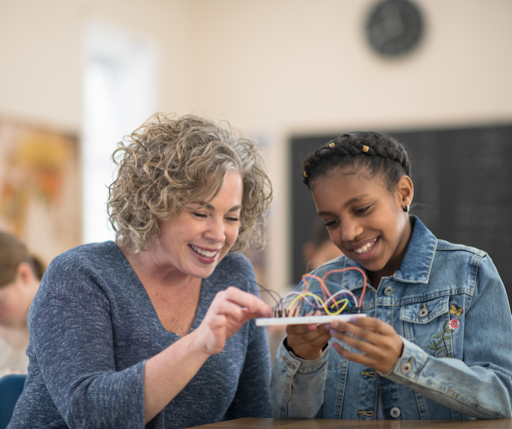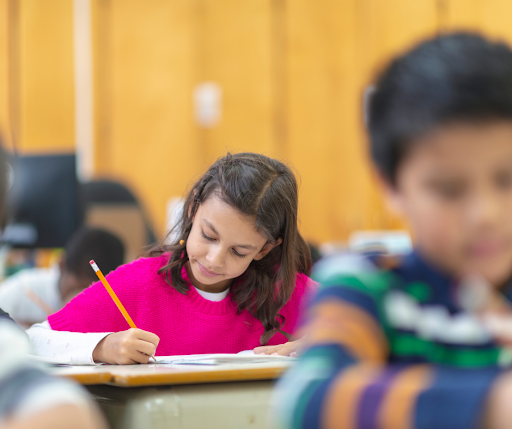Students and even adults can write themselves off when they don’t understand a lesson or subject right away, but not everyone was meant to learn in the same way. With 1 in 5 children in the U.S having a learning or attention issue, the traditional way of learning is not always productive.
Odds are these struggles are being neglected or stem from not knowing your learning style. Knowing your learning style is crucial for both students and parents of students. Identifying how you learn best can equip you with the tools needed to adapt and adjust the material to suit your learning. Because when addressed, utilizing a learning style can help set children up for success in school and beyond as adults.
One of the most popular theories to date is the VARK model. First designed in 1987 by Neil Fleming, VARK lays out four main learning styles: visual, auditory, reading/writing, and kinesthetic. While most people’s strengths are a combination of these four styles, each individual has one style that is typically the most effective way to learn.
Below we’ll explore each type, what they mean, how to use it to your benefit, and whether the VARK model is even accurate to begin with.
Visual
Visual learners are those who learn best when processing information visually. For them, graphs, charts, diagrams, and maps are the best way to process new information. It is important to note that this doesn’t always correspond to images or videos but rather patterns and shapes.
The best way for visual learners to learn is through whiteboards or a presentation that visually demonstrates the different ideas. Encouraging visual learners to draw pictures or diagrams is a great method of nurturing this learning style. Flow charts and pie charts are great examples of putting information visually. These types of learners should receive these visual aids and be allowed to translate information into visuals to help them better process and retain.
Auditory
Auditory learners learn better when processing information in auditory form, meaning heard or spoken. They talk through their ideas to help reach conclusions and retain information rather than thinking through them. Saying things out loud and having or listening to discussions about the topic can help auditory learners better understand a concept.
To accommodate auditory learners, it is best to have open discussions and lectures. Repeating back information, recording the lectures, and group activities that promote conversation are great ways to learn. As a parent or teacher, you can ask questions and have them explain their answers to you.
Kinesthetic
Kinesthetic learners are those who learn by being active and doing something. Rather than sitting still at a desk, kinesthetic learners like to put themselves right in the middle and get involved. Instead of watching or listening, they learn by doing, enjoying a hands-on experience.
The best way to present new information to a kinesthetic learner is through experience, practice, examples, or simulations. Kinesthetic learners can remember an experiment and concept by recreating it. The trick is to get them up and moving. The bowling ball pendulum is a great example often used in physics classrooms. It demonstrates the lesson at hand while getting students to stand up and participate in the activity that proves the theory.
Reading and Writing
As the name implies, Reading and Writing learners process new information best when reading or writing it down. These types of learners usually perform well on written assignments. Reading allows them the time first to get familiar with a concept. Written assignments and writing notes are highly effective and encourage these learners to build upon that text. They will better retain this information by putting it down onto paper and restating what was described in their own way.
This format is most frequently taught or expected in school as it follows the more traditional learning methods used in a classroom. Writing essays, writing tests, performing research, and reading books are great ways to encourage this type of learner.
What Now?
Have you identified what learning method you or your students use? Knowing how an individual learns is the foundation for furthering their education and functioning in the world. Exploring different ways to learn in your dominant style can help open new doors in learning, easing any school or homework anxiety and feelings of being behind, or not!
Before you take an online learning styles quiz, it’s a good idea to ask, do learning styles exist? Can you learn better if taught according to your learning style? Based on rigorous studies, students whose preferred learning style matched their instruction performed no better on the tests than those whose instruction was mismatched.
Is VARK accurate?
No study shows how the four groups of pupils spontaneously form. Why don’t we observe variations in learning or memory with diverse presentations if we assume that some people are better than others at understanding and remembering specific kinds of information, such as visual or auditory? This is because we don’t want people to remember the specific details of the visuals or the pitch or quality of the music. It’s the presentations’ deeper significance. However, learning style theories contend that these preferences will hold regardless of the learning area. A perfect pitch should enable a person to learn everything more easily through auditory means, but this is obviously not the case. A map will help most individuals learn geography more effectively.
Articles discussing learning styles always come up with the conclusion that there is no credible evidence that learning styles exist.
The fact that many individuals already hold this belief is one of the factors that make learning styles so persuasive. For instance, they may already believe that they learn best visually, so when a teacher shows them a diagram, and it automatically clicks, they may think this is evidence of their visual learning style. When in fact, that diagram may have been a superb one that would have helped to learn for everyone. When we already believe the world to be a certain way, we interpret novel encounters in ways that may or may not be consistent with those beliefs.
But what actually benefits learning if not learning styles? There is a lot of research to back up the idea that using multimodal techniques, in which words and images are given alongside one another rather than separately, everyone learns more effectively. This phenomenon, known as the “multimedia effect,” partially explains why videos can be such effective teaching aids when the narrative goes along with the images.









